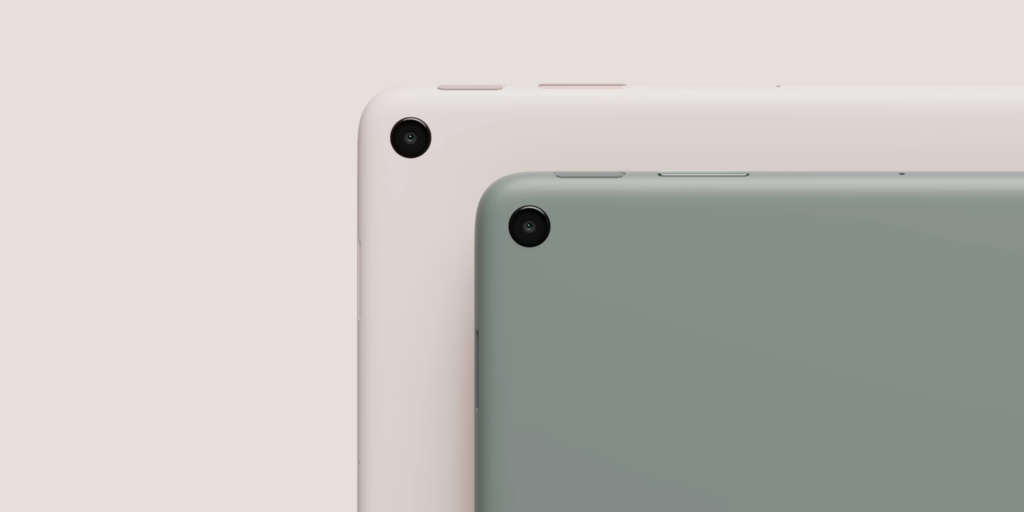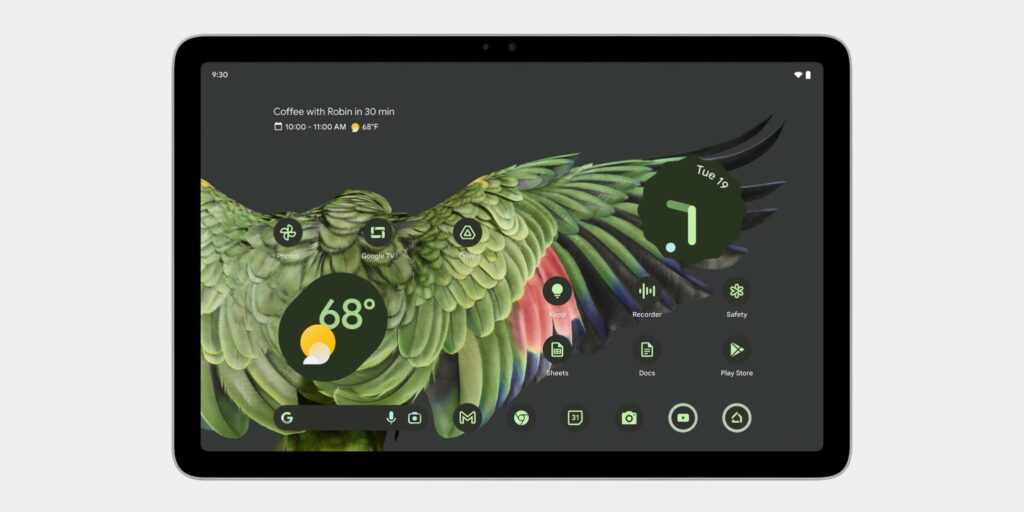The Google Pixel Tablet was teased back at Google I/O 2022 and the company claimed it’d be released sometime in 2023. Well, we’re well and truly into 2023 now, so where’s the Pixel Tablet?
The good news is that we know a lot about the upcoming tablet thanks to details provided by Google itself, along with the usual flurry of leaks and rumours that should be taken with a pinch of salt.
Combined, they paint a picture of a capable tablet sporting Google’s Tensor G2 chipset, a 10.95-inch display, a premium build and a dock that turns the tablet into a smart display when not in active use.
The best part? It might be released in the coming weeks. Here’s everything we know so far about the Google Pixel Tablet, from release date and pricing speculation to confirmed specs and rumoured features.
When will the Google Pixel Tablet be released?
The Google Pixel Tablet will arrive in 2023 – Google has confirmed as much, so that’s not in question right now. The real question is when in 2023 will the tablet appear?
Online whispers are pointing towards a possible reveal at Google I/O 2023, which is currently scheduled for 10 May 2023, alongside the rumoured Google Pixel 7a and Google Pixel Fold. But, unlike the rumoured Pixel 7a, the Pixel Tablet won’t go on sale in May.
Instead, rumours point towards June as a more likely release window for the Pixel Tablet, though just when in June we should expect it is anybody’s guess. Rumours point towards the release of the Pixel Fold on 27 June, suggesting that the Pixel Fold could take the early June window, but that’s unconfirmed for now.
How much will the Google Pixel Tablet cost?
While we know a lot about various aspects of the Google Pixel Tablet, one thing we don’t yet know is how much it’ll cost at launch – officially, anyway.
Unofficially, leaker Roland Quandt claimed in April 2023 that the upcoming tablet will retail for between €600 and €650 in European markets.
If true, that matches the €650 RRP of the Pixel 7, suggesting it could cost around £599 in the UK and $599 in the US – similar to the RRP of Apple’s £669/$599 iPad Air and more expensive than the £449/$479 OnePlus Pad.
What to expect from the Google Pixel Tablet
While the Google Pixel Tablet is yet to be released, Google has given us a good idea about what to expect from the tablet. In fact, there’s an entire page on the Google website dedicated to the upcoming tech, outlining key hardware and software features, and even a couple of photos of the tablet itself.
Hey, it’s much harder for leaks to happen when you announce everything yourself, right?
Premium design
While we only get a glimpse of the design on the Google website, the Pixel Tablet looks like a premium bit of kit with a slightly curved rear design that likely makes it easier to hold the large tablet one-handed, complete with a single rear-facing camera, the Google logo and what looks to be an Apple-style Smart Connector along one edge.
Google has also confirmed that the tablet will sport a nano-ceramic coating over the aluminium chassis that Google says is inspired by porcelain and provides a “soft matte look and textured feel”, so it could possibly be cool to the touch.
Front-on, it doesn’t look dissimilar to an iPad Air with relatively noticeable bezels on each side that act as a way to hold the tablet without accidentally tapping on the display. The official images show two different colours of the bezel – black and white – suggesting that there will be at least two finishes available at launch.

Google has already shown off green and white rear finishes, but it’s worth noting that rumours currently point towards four potential colour finishes.
That premium design extends to the software with the inclusion of Google’s Material You software customisation – just like the Pixel 7 and Pixel Watch – allowing you to personalise the look of the operating system with custom colours and an intelligent system that automatically chooses UI colour based on the wallpaper you’ve chosen.
While we don’t officially know just how big the Pixel Tablet’s display will be, Google has described it as “on the larger side”. Unofficially though, leaks claim that the tablet could feature a 10.95-inch LCD display (around an inch larger than that of Google’s Nest Hub Max) with a resolution of 2560 x 1600.
A hybrid form factor
Google describes the Pixel Tablet as “helpful all the time, in your hands and in your home” and there’s very good reason for that; it can transform into something akin to the Google Nest Hub when not actively used as a tablet when used in conjunction with the new Charging Speaker Dock.
Thanks to magnets built into both the tablet and the stand, the Pixel Tablet should snap right into place on the dock when not in active use. As well as providing charge, built-in speakers within the dock can improve the quality of audio when listening to music or watching a movie on Netflix.

While docked, the tablet performs much like the Nest Hub, allowing you to do things like access Google Assistant hands-free, turn the screen into a digital photo frame and control your smart home devices with a tap.
Though not confirmed, we imagine it could also run any app you have installed on the tablet, potentially making it a great way to play Android titles like Call of Duty Mobile with a dedicated Bluetooth controller.
It’s currently unclear whether the dock will be included with the tablet as standard as an early Amazon listing spotted by 9to5Google saw the company listing the dock for $129 a pop, though more recent leaks suggest one will come bundled in the box.
Tensor G2 power
Google has also confirmed that the upcoming Pixel Tablet will sport the company’s own Tensor G2 chipset, marking the first time that Google’s chipset has been used in anything but a phone.
It’s not exactly a surprise that the tab will sport the G2 processor – it’s the chipset powering the flagship Pixel 7 and Pixel 7 Pro, and it’s expected to power the upcoming budget-focused Google Pixel 7a too.
That should allow the tablet to offer impressive AI-powered features like the impressive transcription and voice recording offered by Google’s Recording app, as well as features like auto-captioning when watching videos without dedicated subtitles.

It isn’t the most powerful chipset around though; reviewer Max Parker said in his review of the Pixel 7 Pro that the chipset isn’t designed to compete with Apple’s A16 Bionic or even the Snapdragon 8 Plus Gen 1, which was the most powerful chip at the time, though that has since been usurped by the Snapdragon 8 Gen 2.
That means that, now more than ever, the Tensor G2 chipset isn’t the most powerful on the market, though we doubt very much that most users would notice a difference between it and other high-end chipsets in everyday use.
Back on the rumour side of things, whispers claim that the Tensor G2 will be paired with 8GB of RAM and either 128- or 256GB of storage.
Are you excited about the Google Pixel Tablet? Let us know on Twitter.




